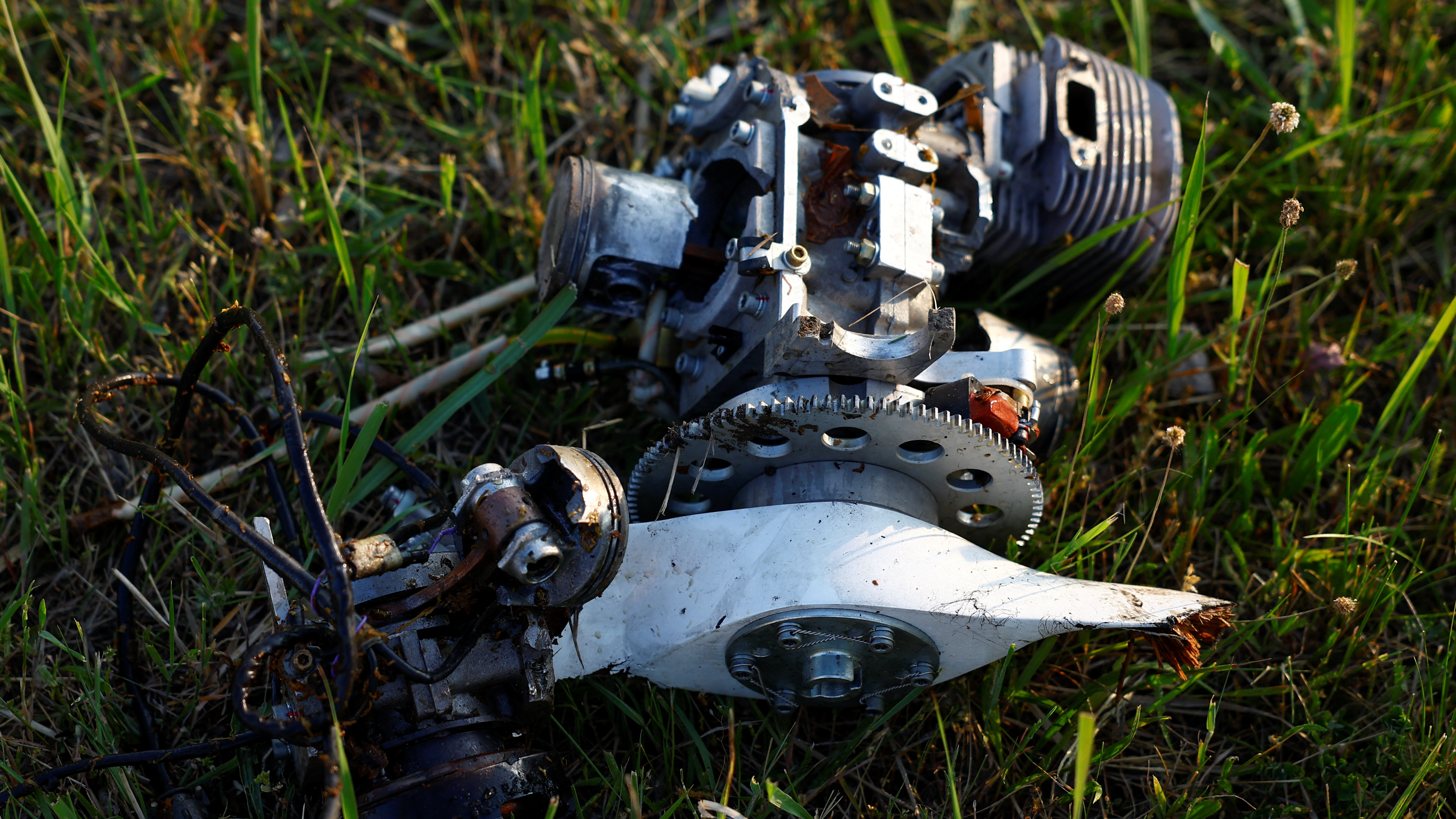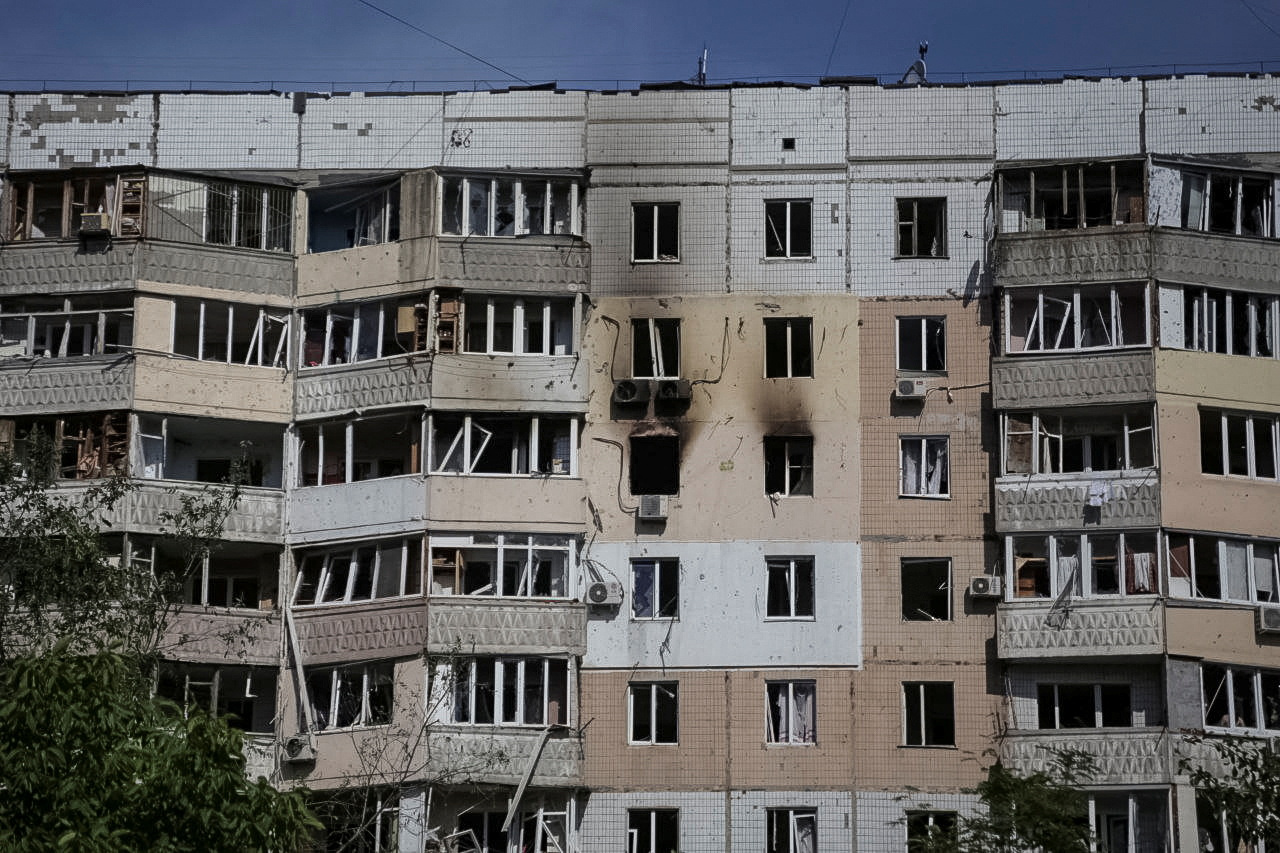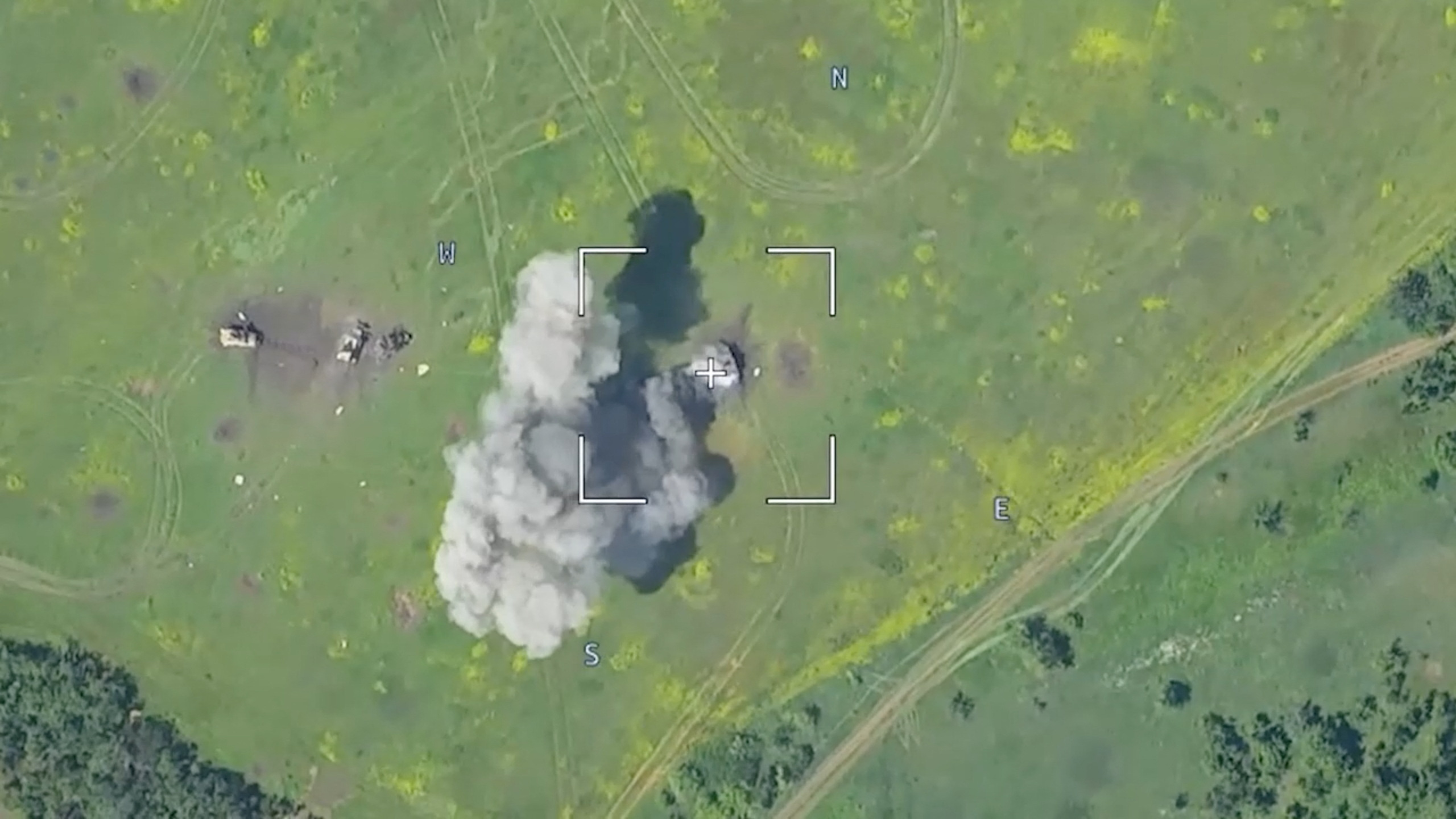
Drones have played an influential role in the conflict between Ukraine and Russia. Here, parts of a Russian suicide drone are seen at a compound of a tobacco factory damaged during a strike in Kyiv. Reuters/Valentyn Ogirenko.
Drones have played an influential role in the conflict between Ukraine and Russia. Here, parts of a Russian suicide drone are seen at a compound of a tobacco factory damaged during a strike in Kyiv. Reuters/Valentyn Ogirenko.
From tiny quadcopters buzzing over frontline trenches with cameras and grenades to flying bombs lugging warheads weighing dozens of kilograms (pounds) into Kyiv and Moscow, drones have marked the Ukraine war like none before it.
In recent months, Russian troops have sent waves of Iranian-made Shahed explosive drones at Kyiv and other major cities, while Ukraine has launched unmanned attacks of its own in Crimea and Russian border region Belgorod.
The Russian government even accused Ukraine on Tuesday of attacking Moscow with such devices. Today's picture is a far cry from the hype surrounding Turkish-made Bayraktar TB2 drones in the early months of the war.
READ MORE
Interview: Inter Milan chairman Zhang
Serbia extends illegal arms amnesty
Kakhovka dam: What will the environmental impact be?
The aircraft made headlines and was praised in song for its role in smashing Moscow's armored columns and the Black Sea fleet flagship, the Moskva. But such models -- known as MALE, for Medium Altitude, Long Endurance -- have lost relevance as the conflict has dragged on.
"The front has stabilized and become impenetrable, as the Russians have deployed systems" to defend against attack from the air, a European defence industry source told AFP on condition of anonymity.
Now the drone war has become a numbers game. Most self-detonating drones are downed by air defenses, "used to force the defenders to fire their missiles and run down reserves", a senior French military source said.
"You also create terror and uncertainty at all times. Over the long term, that has value," the source added.

A view shows an apartment building damaged during a massive Russian drone strike in Odesa./Reuters/Serhii Smolientsev.
A view shows an apartment building damaged during a massive Russian drone strike in Odesa./Reuters/Serhii Smolientsev.
Front lines
Eroding enemy air defence cheaply is especially vital for Russia, whose production of long-range missiles is limited to around 40 per month, analysts Jack Watling and Nick Reynolds of British defense think-tank RUSI wrote in a recent report.
Moscow's air force "launches large numbers of aircraft to increase the number of potential axes of threat... (and) to identify gaps in Ukrainian air defense" where traditional missiles could get through, Watling and Reynolds said.
Kyiv also uses "commercially available Chinese propeller-powered drones or old Soviet jet-powered reconnaissance drones" that can attack "well inside Russian territory", the European industrial source said.
The vast majority of drones are smaller models used on the front lines for both reconnaissance and attack.
Ukrainian troops have published many videos on social media showing modified commercially available drones dropping bombs onto Russian soldiers' positions. On any given 10-kilometre (six-mile) stretch of front line, "it is typical for there to be between 25 and 50 UAVs (unmanned aerial vehicles) from both sides", the report claimed.
Purpose-built Ukrainian Furia and Russian Eleron-3 drones range up to 50 kilometers, while modified commercial quadcopters -- many bought through crowdfunding -- can venture fewer than 10.
The swarms have pushed both sides into deploying electronic defenses, lowering the cost of countering devices that are too cheap to be worth shooting down with pricey missiles.
Russian forces "now employ approximately one major electronic warfare system per 10km of frontage" according to RUSI, with more specialized Electronic Warfare capabilities further up the chain of command.
"The Russians have stepped up their electronic warfare game. It's a huge change," the senior French officer said.

Drone footage shows a burning armoured vehicle in an unidentified location after the Defence Ministry in Moscow said that Russian forces have thwarted a major Ukrainian offensive in the southern Ukrainian region of Donetsk./Reuters via third party.
Drone footage shows a burning armoured vehicle in an unidentified location after the Defence Ministry in Moscow said that Russian forces have thwarted a major Ukrainian offensive in the southern Ukrainian region of Donetsk./Reuters via third party.
High attrition
Even individual Russian platoons are now equipped with anti-drone weapons, RUSI said, including "directional jammers and arrays for hijacking UAVs." Anti-drone rifles that emit jamming signals are "the absolute basics of defense, what really works are non-portable jammers deployed close to the front line", the European industry source said.
But such "big spheres on tripods with generators" are "easily spotted and have a limited life expectancy", they added.
Drone and anti-drone warfare were "a new form of combined arms combat", the French officer said.
"Just as we have infantry, cavalry and artillery, so we have drones, electronic warfare and connectivity."
With so much energy going into their destruction, most small drones "won't fly more than four or six times before being shot down", the officer added.
Ukraine has said they are losing around 10,000 drones per month across the large range of devices they use -- a figure impossible to verify that could be aimed at securing more Western aid.
If breakthroughs and counteroffensives see a return to rapidly shifting front lines, drones will remain relevant.
Ukraine could use drones to clear Russian defensive barriers in its widely trailed summer attack, for instance "to drop explosives into a minefield, literally blowing a path through", Vikram Mittal, a professor at U.S. military academy West Point, wrote in Forbes.
Where highly mobile advancing troops get cut off, "drones could offer a method to resupply these units with the ammunition and other supplies necessary for them to continue their operations", he added.

Subscribe to Storyboard: A weekly newsletter bringing you the best of CGTN every Friday
Source(s): AFP